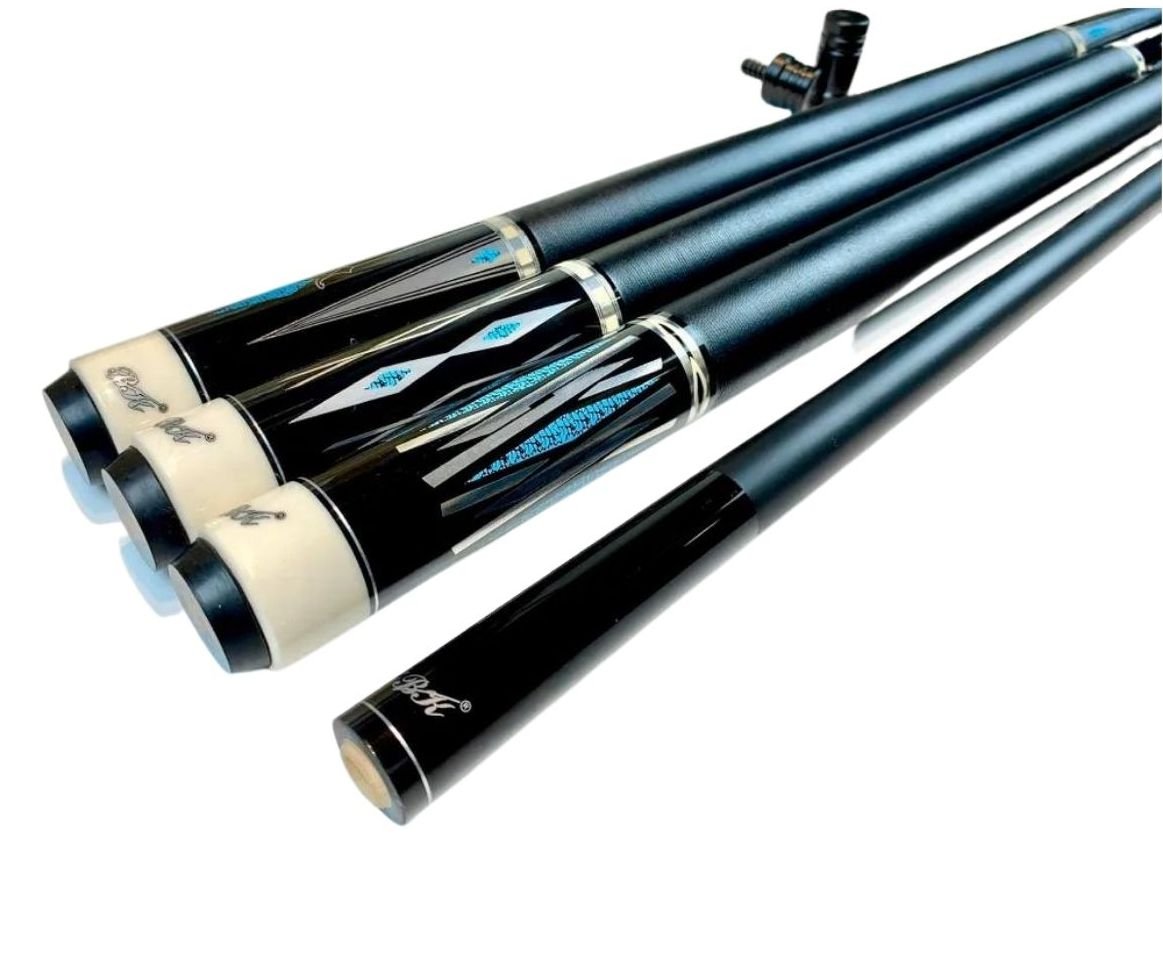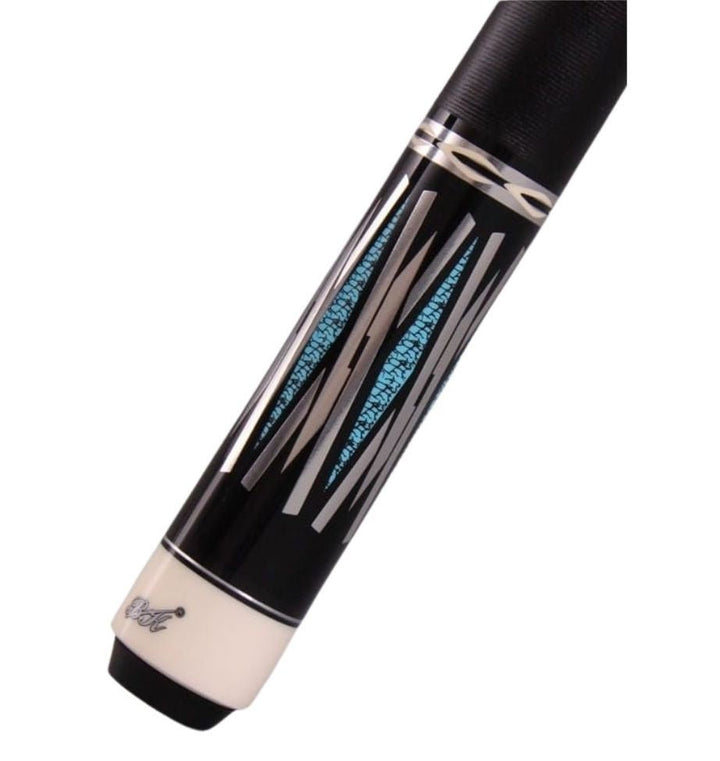Intermediate Pool Cues: Elevate Your Game With The Right Stick
Listen up, pool sharks in the making! If you're diving into the world of intermediate pool cues, you're stepping into a realm where precision meets power. Whether you're leaving the beginner stage behind or just looking to upgrade your gear, the right cue stick can make all the difference. Let's talk about why intermediate pool cues are the perfect bridge to take your game to the next level, and how to pick the one that suits you best.
So, here's the deal—choosing a pool cue isn't just about picking something that looks cool. Sure, aesthetics matter, but when we're talking intermediate pool cues, it's all about performance, durability, and that sweet spot where skill meets equipment. You're no longer a newbie, but you're not quite a pro yet. That's where these cues come in, designed specifically for players like you who are ready to step up their game.
Now, before we dive deep into the nitty-gritty, let's get one thing straight. Intermediate pool cues are crafted to help you refine your technique, boost your confidence, and deliver consistent shots. It's like finding the perfect pair of shoes for a marathon—yeah, it matters that much. So, buckle up, because we're about to break down everything you need to know.
Read also:When Queen Elizabeths Corgi Whisper Stole The Show At A Royal Meeting
Why Choose Intermediate Pool Cues?
Alright, let's get real. Beginner cues are great for learning the basics, but they lack the finesse and balance needed for more advanced play. On the flip side, pro-level cues might be a bit overkill if you're not competing at the highest levels. That's where intermediate pool cues shine. They offer a perfect balance of quality and affordability, tailored for players who are serious about improving their skills.
Key Features to Look For
When you're shopping for an intermediate cue, keep an eye out for these key features:
- Shaft Material: Look for cues with high-quality wood or fiberglass shafts. These materials provide better control and accuracy.
- Weight: Intermediate cues typically range from 18 to 21 ounces. Choose a weight that feels comfortable in your hand.
- Tip Type: Leather tips are the go-to choice for most players because they offer excellent control and spin.
- Balance Point: A well-balanced cue ensures smooth strokes and reduces fatigue during long sessions.
These features might sound like small details, but trust me, they can make or break your game. It's like building a house—you need a strong foundation to support everything else.
Understanding the Mechanics of Intermediate Pool Cues
Let's break it down further. Intermediate pool cues are designed with specific mechanics in mind to enhance your performance. Here's what you need to know:
Shaft Design and Performance
The shaft of your cue is like the engine of a car—it drives everything. Intermediate cues often come with tapered or conical shafts, which provide better control and reduce the chances of miscues. A tapered shaft, for instance, offers a softer hit, while a conical shaft gives you more power. It's all about finding the right fit for your playing style.
Joint Types and Durability
Intermediate cues usually feature metal or wooden joints. Metal joints are more durable and provide a solid connection between the cue's two halves, while wooden joints offer a more traditional feel. Both have their pros and cons, so it's important to test them out before making a decision.
Read also:Kate Middletons Fingers Take Center Stage Amid Media Buzz
How to Select the Best Intermediate Pool Cue
Now that you know what to look for, let's talk about how to select the best intermediate pool cue for your needs. Here's a step-by-step guide:
Step 1: Determine Your Budget
Intermediate cues can range from $50 to $200, depending on the brand and features. Set a budget that aligns with your goals and stick to it. Remember, more expensive doesn't always mean better—it's all about finding the right fit for your skill level.
Step 2: Test Different Cues
Whenever possible, try out different cues at your local pool hall or store. Pay attention to how each one feels in your hand, the weight distribution, and the sound it makes when it strikes the ball. These are all indicators of quality and performance.
Step 3: Read Reviews and Ratings
Don't underestimate the power of online reviews. Check out what other players are saying about the cues you're considering. Look for patterns in the feedback—consistent praise or criticism can be a good indicator of quality.
Top Brands in the Intermediate Pool Cue Market
When it comes to intermediate pool cues, some brands stand out from the crowd. Here are a few worth considering:
- MD Cues: Known for their high-quality craftsmanship and innovative designs, MD cues are a favorite among intermediate players.
- Brunswick Cues: Offering a range of options at various price points, Brunswick cues are reliable and durable.
- Lucasi Cues: With a focus on performance and style, Lucasi cues are a great choice for players who want both form and function.
These brands have earned their reputation through years of experience and customer satisfaction. Do your research and see which one aligns with your preferences.
Customizing Your Intermediate Pool Cue
Did you know you can customize your intermediate pool cue to suit your personal style? From adding custom wraps to choosing unique designs, the possibilities are endless. Customization not only makes your cue stand out but can also improve your grip and comfort during play.
Popular Customization Options
Here are some popular customization options to consider:
- Grip Wraps: Add a leather or rubber wrap for better grip and control.
- Custom Designs: Choose from a variety of artistic designs to make your cue truly unique.
- Weight Adjustments: Add or remove weight bolts to fine-tune the balance of your cue.
Customization is all about making your cue feel like an extension of yourself. It's your tool, so why not make it perfect for you?
The Science Behind a Great Pool Cue
There's a lot of science that goes into designing a great pool cue. From the materials used to the engineering behind the design, every detail matters. Here's a closer look at the science:
Material Science
Intermediate cues are often made from a combination of wood, fiberglass, and carbon fiber. Each material has its own set of properties that affect performance. For example, carbon fiber cues are lighter and more durable, while wood cues offer a more traditional feel.
Engineering Design
The design of a cue is crucial for maximizing performance. Engineers focus on factors like weight distribution, balance point, and shaft flexibility to ensure optimal play. It's like building a race car—every component must work together seamlessly.
Common Mistakes to Avoid When Buying an Intermediate Pool Cue
Buying a pool cue isn't as simple as picking one off the shelf. Here are some common mistakes to avoid:
- Ignoring Weight: Don't underestimate the importance of finding the right weight for your cue.
- Skipping Testing: Always test a cue before purchasing to ensure it feels right in your hand.
- Overlooking Quality: Cheap cues might save you money upfront, but they won't last long and could hinder your progress.
Avoiding these mistakes will help you make a more informed decision and ensure you get the most out of your investment.
Conclusion: Take Your Game to the Next Level
So, there you have it—a comprehensive guide to intermediate pool cues. Whether you're upgrading from a beginner cue or just looking to refine your equipment, the right intermediate cue can make a world of difference. Remember, it's all about finding the perfect balance of quality, performance, and affordability.
Now, here's the deal—don't just sit there! Head out to your local pool hall, test some cues, and find the one that feels right for you. And when you do, come back and share your experience in the comments. Let's build a community of pool players who are passionate about the game and the gear that makes it great.
Table of Contents
- Why Choose Intermediate Pool Cues?
- Key Features to Look For
- Understanding the Mechanics of Intermediate Pool Cues
- How to Select the Best Intermediate Pool Cue
- Top Brands in the Intermediate Pool Cue Market
- Customizing Your Intermediate Pool Cue
- The Science Behind a Great Pool Cue
- Common Mistakes to Avoid When Buying an Intermediate Pool Cue
- Conclusion: Take Your Game to the Next Level
Article Recommendations


